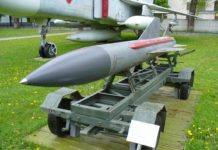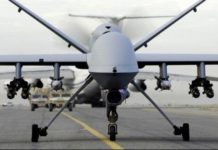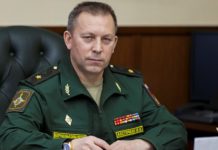Russia is going to finish the civil war in Syria and to switch to combating of only Islamic State and other terrorist organizations together with the US and other countries.
Damascus borrowed the “tactic of severed heads” from terrorists
Russia is going to finish the civil war in Syria and to switch to combating of only Islamic State (IS, prohibited in Russia) and other terrorist organizations together with the US and other countries. Such was the position of Moscow that Russian Foreign Minister Sergei Lavrov tried to convey to US President Donald Trump yesterday.
Formal support of the memorandum on creation of de-escalation zones on the territory of Syria initiated by Moscow and signed on May 5 in Astana on the part of Washington does not mean that problems between the US and Russia in the Middle East have disappeared. On the eve of Lavrov’s visit to the US Donald Trump prolonged the sanctions against Damascus for a year.
The White House demanded Bashar Assad to step down again. The American President also approved supply of heavy armament to the Kurdish forces fighting against the IS. This will increase the separatist sentiments in Syria will aggravate contradictions of Kurds not only with the regime of Assad but also with Turkey that has supported Russia and together with Iran has signed the memorandum on creation of de-escalation zones in Syria.
There is certain hope that in the UN the US will support the peace plan for regulation of the situation in Syria proposed by Moscow. Along with this, Americans keep implementing their own plan in Iraq and Syria that does not correspond to Russian initiatives very much. Washington presumes that the de-escalation zones created in Syria “will not cover the territories where the coalition headed by the US fighters against the IS.” These territories where Pentagon carries out Euphrates Wrath operation are rich with oil. And for Washington it is very important to obtain control over these territories with assistance of the Kurdish militia and Arab self-defense forces being in opposition to Assad. Information about additional supply of heavy armament to the forces attacking informal capital of the IS Raqqa speaks about the wish of the US to complete combat operations against terrorists in the area of the oilfields as soon as possible outrunning Russia.
Judging by statements of Russian military commanders, Moscow also has plans related to liberation of the territories rich with oil and gas fields. Speaking about the plan of the memorandum on de-escalation zones, head of the Main Operational Directorate of the General Staff Colonel General Sergei Rudskoy directly announced that “establishment of de-escalation zones will enable the governmental forces to vacate a significant quantity of troops.” According to him, these troops “will be sent for continuation of the offensive against the IS forces in central and eastern parts of Syria and liberation of areas along the Euphrates River.” The general explained that it was planned “to develop the offensive to the east of Palmyra” where numerous gas fields were located. Afterwards, it is planned to carry out “de-blockade of Deir ez-Zor” in the vicinity of which there are oil fields.
We cannot help noticing that the Defense Ministry plans to support actions of the governmental forces of Syria in places where coalition forces headed by the US are fighting now. And the US and its Arab allies will evidently try to hinder fulfillment of the memorandum on creation of de-escalation zones informally. Along with this, other forces besides the Americans may hinder its implementation too. According to reports of the Russian center for reconciliation of the opposing parties, numerous “breaches of the ceasefire regime in the zones stipulated by the memorandum” were registered since the day of signing of the document on de-escalation zones. This was done mostly by irreconcilable bandit forces close to the IS and Jabhat al-Nusra (prohibited in Russia). According to the plan of the General Staff, it is necessary to separate them form the groups of the militants who agree with a truce. And combat operations against the irreconcilable terrorists in de-escalation zones will be continued until their complete liquidation.
According to the Defense Ministry, for the sake of separation of de-escalation zones from other peaceful territories of Syria “security strips are being currently created that include observation points for control over observance of the regime of truce and checkpoints for provision of movement of civilians.” Work at observation points and checkpoints, as well as governance of de-escalation zones “will be done by personnel and formations of Russia, Turkey and Iran.” Military diplomatic sources report that a joint working group is being currently created with participation of these countries. By June 4 of 2017, this group will present precise borders of de-escalation zones and security strips, “as well as maps of separation of formations of the armed opposition from terrorist groups” for approval.
Thus, the Russian military group in Syria will evidently be increased soon by contingents of troops that fulfill peacekeeping functions in de-escalation zones and security strips. Similar armed formations from Turkey and Iran will join them. For the regime of Assad this is a very good solution. Deputy Defense Minister Lieutenant General Alexander Fomin presumes that “fulfillment of the memorandum will allow stopping of combat operations of the conflicting parties and actual stopping of the civil war in Syria.”
Significant forces from Russia, Iran and possibly other countries friendly to the regime of Assad are also necessary for continuation of combat operations against the IS forces stationed in Central Syria and to the east of Euphrates. According to Syrian mass media, there are such forces in the region already. Yesterday, it was reported that certain battalion TURAN manned with people from the North Caucasus, Transcaucasia and Central Asia including Shiite Azerbaijanis acted very well during the battle near Palmyra.
Local journalists call this battalion “counter-guerilla special forces from the USSR.” Its strength is estimated from 800 to 1,200 people. Internet portal Free-News presumes that most likely TURAN is one of the private military companies that provide their services to the government of Syria. Yesterday, representatives of the battalion demonstrated photos of the militants liquidated by them including those with severed heads. These photos are interpreted as counterpropaganda and act of intimidation of the IS militants. I any case, such actions and explanations are not quite correct and logical. Earlier, such photos were demonstrated only by the IS terrorists.














